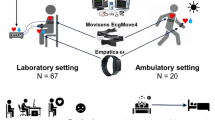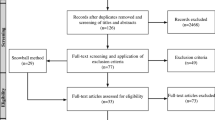Abstract
Caring for the elderly is becoming a key challenge for society, given the shortage of trained personnel and the increased age of the population. Innovative approaches are needed to help the elderly remain at home longer and more safely, that is, to age in place. One popular strategy is to monitor the activity of the elderly: this focuses on obtaining information for caregivers rather than supporting the elderly directly. We propose an alternative, i.e. to enhance their inter-personal communication. We report the results of a user study with 14 independent elderly women and discuss the existing role that communication plays in maintaining their independence and well-being. We highlight the importance of peer support relationships, which we call PeerCare, and how awareness of each other’s rhythms and routines helps them to stay in touch. We then describe the deployment of a technology probe, called markerClock, which a pair of elderly friends used to improve their awareness of each other’s rhythms and routines. We conclude with a discussion of how such communication appliances enhance the awareness of rhythms and routines among elderly peers and can improve their quality of life and provide safer and more satisfying aging in place.




Similar content being viewed by others
References
Anderson, R. J. (1994). Representations and requirements: the value of ethnography in system design. Human-Computer Interaction, 9(3), 151–182.
Aoki, P. M., & Woodruff, A. (2005). Making space for stories: Ambiguity in the design of personal communication systems. ACM Conf. on Human Factors in Computing Systems. Portland, OR, USA, ACM.
Beaudouin-Lafon, M., Druin, A., Harvard, A., Lindquist, S., Mackay, W., Plaisant, C., et al. (2001). interLiving deliverable 1.1, technology probes for families. Deliverable, CID/NADA, KTH, Sweden.
Begole, J., Tang, J. C., Smith, R. B., & Yankelovich, N. (2002). Work rhythms: Analyzing visualization of awareness histories of distributed groups. Proc of the ACM Conf. on Computer Supported Collaborative Work. New Orleans, LO, USA, ACM.
Bentley, F. R., & Metcalf, C. J. (2007). Sharing motion information with close family and friends. CHI’07. San Jose, CA, USA, ACM.
Bly, S., Harrison, S., & Irwin, S. (1993). Media spaces: Bringing people together in a video, audio, and computing environment. In Communications of the ACM. pp. 28–47.
Bourdieu, P. (1997). Marginalia, some additional notes on the gift. In A. D. Schrift (Ed.), The logic of the gift: Toward an ethic of generosity. London: Routledge.
Brown, B., Taylor, A., Izadi, S., Sellen, A., Kaye, J., & Eardley, R. (2007). Locating family values: A field trial of the whereabouts clock. UbiComp'07. Innsbruck, Austria, Springer.
Cantor, M. A. (1979). Neighbors and friends: an overlooked resource in the informal support system. The Journal of Research on Aging, 1(4), 434.
Conversy, S., Roussel, N., Hansen, H., Evans, H., Beaudouin-Lafon, M., & Mackay, W. (2003). Sharing daily-life images with videoProbe. IHM. Caen, France, ACM.
Crabtree, A. & Rodden, T. (2004). Domestic routines and design for the home. Journal of Computer Supported Cooperative Work, 13, 191–220.
Crabtree, A., Hemmings, T., Rodden, T., Cheverst, K., Clarke, K., Dewsbury, G., et al. (2003). Designing with care: Adapting cultural probes to inform design in sensitive settings. In the Proc. of the 2003 Australasian Conference on Computer-Human Interaction. Brisbane, Australia, Ergonomics Society of Australia.
Dickinson, A., Newell, A. F., Smith, M. J., & Hill, R. L. (2005). Introducing the internet to the over-60s: developing an email system for older novice computer users. Interacting with Computers, 17, 621–642.
Donaldson, J. M. & Watson, R. (1996). Loneliness in elderly people: an important area for nursing research in the Journal of Advanced Nursing, 24(5), 8.
Edvardsson, B. & Roos, I. (2001). Critical incident techniques: towards a framework for analysing the criticality of critical incidents. International Journal of Service Industry Management, 12(3), 251–268.
Elmqvist, N., Henry, N., Riche, Y., & Fekete, J. D. (2008). Mélange: Space folding for multi-focus interaction. In the Proc. of the SIGCHI Conference on Human Factors in Computing Systems. ACM.
Forlizzi, J., Hirsch, T., Hyder, E., & Goetz, J. (2001). Designing pleasurable technology for elders. In the Proc of INCLUDE 2001. London, England.
Gaver, W., Dunne, T., & Pacenti, E. (1999). Design: cultural probes. Interactions, 6(1), 21–29. ACM.
Gaver, W., Sengers, P., Kerridge, T., Kaye, J., & Bowers, J. (2007). Enhancing ubiquitous computing with user interpretation: Field testing the Home Health Horoscope. In the Proc. of the SIGCHI Conf. on Human Factors in Computing Systems. San Jose, CA, USA, ACM, pp. 537–546.
Gaver, W., Bowers, J., Kerridge, T., Boucher, A., & Jarvis N. (2009). Anatomy of a failure: How we knew when our design went wrong, and what we learned from it. In the Proc. of the SIGCHI Conf. on Human Factors in Computing Systems. Boston, MA, USA, ACM.
Gierveld, Jd J & Perlman, D. (2006). Long-standing nonkin relationships of older adults in the Netherlands and the United States. The Journal of Research on Aging, 28(6), 730–748.
Giles, L. C., Glonek, G. F. V., Luszcz, M. A., & Andrew, G. R. (2005). Effects of social networks on 10 year survival in very old Australians: the Australian longitudinal study of aging. Journal of Epidemiology and Community Health, 59, 574–579.
Hutchinson, H., Mackay, W., Westerlund, B., Bederson, B., Druin, A., Plaisant, C., et al. (2003). Technology probes: Inspiring design for and with families. In the Proc. of the SIGCHI conf. on Human Factors in Computing Systems. Ft. Lauderdale, USA, ACM
Kaye, J., Levitt Mariah, K., Nevins, J., Golden, J., & Schmidt, V. (2005). Communicating intimacy one bit at a time. In the Ext. Abs. of the SIGCHI conf. on Human Factors in Computing Systems. Portland, OR, USA, ACM.
Labrune, J.-B., & Mackay, W. (2006). Telebeads: Social network mnemonics for teenagers. In the Proc. of the ACM Conf. on Interaction Design for Children. Tampere, Finland, ACM.
Leonardi, C., Mennecozzi, C., Not, E., Gennai, F., Cristoforetti, A., Pianesi, F., et al. (2009). Knocking on elders’ door: Investigating the functional and emotional geography of their domestic space. In Proc. of the SIGCHI Conf. on Human Factors in Computing Systems. Boston, MA, USA.
Lottridge, D., & Mackay, W. (2009). Generative walkthroughs: Support for creative redesign. In Proc. Creativity and Cognition. Berkeley, CA.
Lottridge, D., Masson, N., & Mackay, W. (2009). Sharing Empty Moments: Design for Remote Couples. In Proc. of the SIGCHI Conf. on Human Factors in Computing Systems. Boston, MA, USA.
Mackay, W. (1999). Media spaces: Environments for informal multimedia interaction. In M. Beaudouin-Lafon (Ed.), Computer-supported cooperative work. Chichester: Wiley.
Mackay, W. (2002). Using video to support interaction design. Video Tutorial distributed at CHI’02, Directed by C. Leininger, Produced by INRIA Multimedia Services.
Mackay, W. (2004). The interactive thread: Exploring methods for multi-disciplinary design. In Proc. ACM Conference on Designing Interactive Systems (DIS 2004). Cambridge, USA, ACM, pp. 103–112.
Mackay, W. E., & Beaudouin-Lafon, M. (2005). FamilyNet: A tangible interface for managing intimate social networks. In Proceedings of SOUPS’05, Symposium on Usable Privacy and Security, July 2005. ACM.
Mackay, W., & Fayard, A.-L. (1997). HCI, natural science and design: A framework for triangulation across disciplines. Proceedings of ACM DIS ‘97, Designing Interactive Systems. Amsterdam, Pays-Bas: ACM/SIGCHI, pp. 223–234.
Markopoulos, P., Romero, N., van Baren, J., IJsselsteijn, W., de Ruyter, B., & Farshchian, B. (2004). Keeping in touch with the family: Home and away with the ASTRA awareness system. In Ext. Abs. of the SIGCHI Conf. on Human Factors in Computing Systems. Vienna, Austria, ACM.
Mauss, M. (1967). The gift, forms and functions of exchange in archaic societies. New York: Norton & co.
Metaxas, G., Metin, B., Schneider, J., Markopoulos, P., & de Ruyter, B. (2007). Daily activities diarist: Supporting aging in place with semantically enriched narratives. In the Proc of INTERACT 2007. Rio de Janeiro, Brazil, Springer-Verlag (LNCS Series).
Morris, M., Lundell, J., Dishman, E., & Needham, B. (2003). New perspectives on ubiquitous computing from ethnographic study of elders with cognitive decline. In the Proc of the IEEE Conf. on Ubiquitous Computing, Seattle. WA, Springer Verlag.
Mynatt, E. D., Adler, A., Ito, M., Linde, C., & O’Day, V. L. (1999). Learning from seniors in network communities. In Ext Abs of the SIGCHI Conf. on Human Factors in Computing Systems. Pittsburgh, PA, USA, ACM, pp. 47–48.
Mynatt, E. D., Rowan, J., Craighill, S., & Jacobs, A. (2001). Digital family portraits: Supporting peace of mind for extended family members. In Proc. of the SIGCHI Conf. on Human Factors in Computing Systems. Seattle, WA, ACM.
Nussbaum, J. F. & Pecchioni, L. L. (2000). Communication and Aging. USA: Routledge.
Palen, L., & Aaløkke, S. (2006). Of pill boxes and piano benches: “home-made” methods for managing medication. In Proc. of the SIGCHI Conf. on Computer Supported Collaborative Work. Banff, Canada, ACM.
Pousman, Z., Romero, M., Smith, A., & Mateas, M. (2008). Living with tableau machine: A longitudinal investigation of a curious domestic intelligence. In the Proc of the ACM Conf. on Ubiquitous Computing, pp. 370–379.
Rialle, V., Nourry, N., & Hervé, T. (2001). An experimental health smart home and its distributed internet-based information and communication system: First steps of a research project. In the Proc. of MEDINFO. London, UK, IOS.
Riche, Y., & Mackay, W. (2007). MarkerClock: A communicating augmented clock for elderly. In the Proc. of INTERACT 2007. Rio de Janeiro, Brazil, Springer (LNCS Series).
Romero, M., Pousman, Z., & Mateas, M. (2006). Tableau-Machine: An alien presence in the home. In Ext Abs of the SIGCHI Conf. on Human Factors in Computing Systems. Montréal, Canada.
Roussel, N. (2001). Exploring new uses of video with videoSpace. In M. R. Little & L. Nigay (Eds.), Proceedings of EHCI’01, the 8th IFIP International Conference on Engineering for Human-Computer Interaction, volume 2254 of Lecture Notes in Computer Science (pp. 73–90). Berlin: Springer.
Roussel, N., Evans, H., & Hansen, H. (2004). MirrorSpace: Using proximity as an interface to video-mediated communication. In the Proc. of Pervasive’04, Springer.
Rowan, J., & Mynatt, E. D. (2005). Digital family portrait field trial: Support for aging in place. In Proc of the SIGCHI Conf. on Human Factors in Computing Systems. Portland, OR, ACM.
Scharnberg, K. (2006). Family watch: Distant children can keep an eye on elderly parents. The Chicago Tribune. 2006.
Sellen, A., Eardley, R., Izadi, S., & Harper, R. (2006). The whereabouts clock: Early testing of a situated awareness device. In Ext Abs of the SIGCHI Conf. on Human Factors in Computing Systems. Montréal, Canada, ACM.
Short, J., Williams, E., & Christie, B. (1976). The social psychology of telecommunications. London: Wiley.
Sixsmith, A. J. (2000). An evaluation of an intelligent home monitoring system. Journal of Telemedicine and Telecare, 6(2), 63–72.
Strauss, A. & Corbin, J. (1998). Basics of qualitative research. Thousand Oaks: Sage.
Taylor, A. S. & Harper, R. (2003). The gift of the gab?: a design oriented sociology of young people’s use of mobiles. Journal of Computer Supported Cooperative Work, 12(3), 267–296.
van Groenou, M. B. (1995). The proximate network. In C. P. M. Knipscheer, Gierveld JdJ, T. G. van Tilburg & P. A. Dykstra (Eds.), Living arrangements and social networks of older adults (pp. 115–129). Amsterdam: VU University Press.
van Tilburg, T., van Groenou, M. B., & Thomése, F. (1995). Flow of support. In C. P. M. Knipscheer, Gierveld JdJ, T. G. van Tilburg & P. A. Dykstra (Eds.), Living arrangements and social networks of older adults (pp. 131–154). Amsterdam: VU University Press.
Vetere, F., Gibbs, M. R., Kjeldskov, J., Howard, S., Mueller, F., Pedell, S., et al. (2005). Mediating intimacy: Designing technologies to support strong-tie relationships. In Proc of the SIGCHI Conf. on Human Factors in Computing Systems. Portland, OR, ACM.
Whitten, P., Collins, B., et al. (1998). Nurse and patient reactions to a developmental home telecare system. Journal of Telemedicine and Telecare, 4(3), 152–160.
Wright, K. (2000). Computer-mediated social support, older adults, and coping. Journal of Communication, 50(3), 100–118.
Author information
Authors and Affiliations
Corresponding author
Rights and permissions
About this article
Cite this article
Riche, Y., Mackay, W. PeerCare: Supporting Awareness of Rhythms and Routines for Better Aging in Place. Comput Supported Coop Work 19, 73–104 (2010). https://doi.org/10.1007/s10606-009-9105-z
Received:
Accepted:
Published:
Issue Date:
DOI: https://doi.org/10.1007/s10606-009-9105-z




